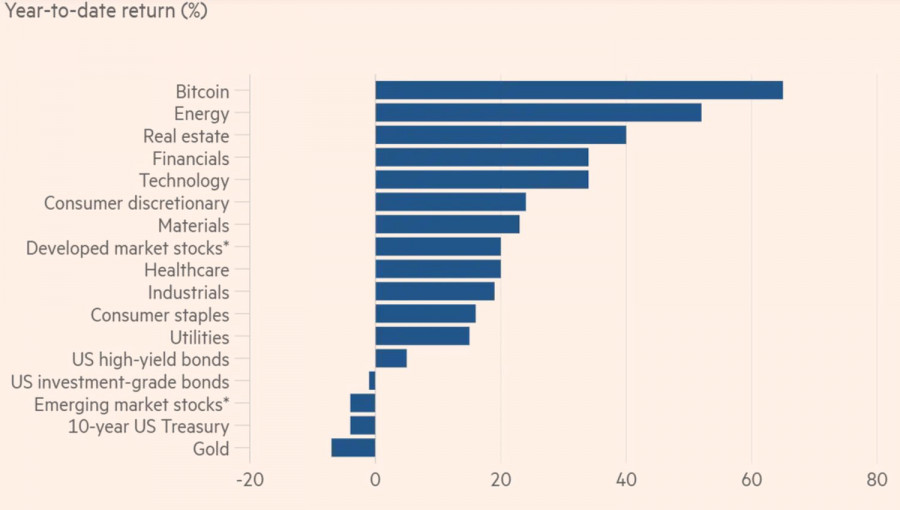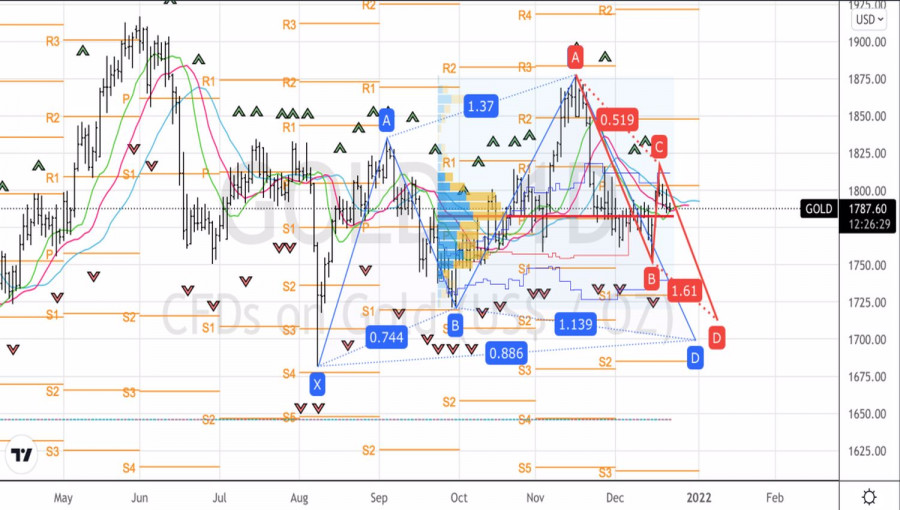
Profit taking on long US dollar positions after the December FOMC meeting, strengthening of the euro in response to the ECB's decision to reduce QE and concerns about the future of the global economy due to the Omicron variant allowed gold to make another attempt to return above the psychologically significant level of $1800 an ounce. The US stock indices correction and the related deterioration of global risk appetite caused the XAU/USD growth. Unfortunately, subsequent strengthening of the US currency, rising US Treasury bond yields and the S&P 500 nullified the ambitious plans of gold enthusiasts.
In 2021, investors were completely disillusioned with gold. It is about to be the first precious metal to enter the red zone in the last three years. Apparently, the 5% loss seems strange amid a rapid acceleration of US inflation to its highs in the last almost 40 years. For example, bitcoin, gold's main rival for the defensive asset status used to hedge inflation risks, soared by 65%. At the same time, the leader of the cryptocurrency sector is more of a risky instrument. Unlike gold, which is still considered to be a safe haven asset.
Increase in asset value in 2021

The start of monetary policy normalization by the world's leading central banks and their determination to tighten it in 2022 is the main bearish driver for the XAU/USD pair. The Fed predicts in particular three federal funds rate hikes next year. The futures market expects the Bank of England to follow suit. The ECB plans to cut asset purchases from the current €80bn a month to €20bn a month by October, while the Bank of Japan is ending its preferential lending program for large enterprises.
The exit of the largest buyers from the debt market and rising interest rates are strong arguments for increasing nominal bond yields around the world. If regulators' forecasts about inflation slowdown in the second half of 2022 are true, real bond yields will start to decline, following nominal ones. This is bad news for bulls on the XAU/USD pair.
Tightening of monetary policy by leading world's central banks was the basis of AMB AMRO's bearish forecast for gold. The bank expects it to drop to $1500 per ounce by the end of 2022 and to $1300 by the end of 2023. Besides, it focuses on the fact that stocks of specialized exchange-traded funds are still 19% higher than at the start of 2020, though they declined from 110 million ounces to 89 million ounces over the past few months. They may continue to fall, resulting in further declines in XAU/USD quotes.
Therefore, gold positions are precarious. I believe the only solution is the Fed's decision to abandon its aggressive monetary restriction principles. However, it is unlikely so far.
Technically, the targets at 88.6% and 161.8% of the shark and AB=CD patterns corresponding to $1700 and $1715 per ounce have not been cancelled. The basis for selling gold will be a successful break of support at $1780. It is the point where fair value, detected by the market profile, is located.
Gold, daily chart
